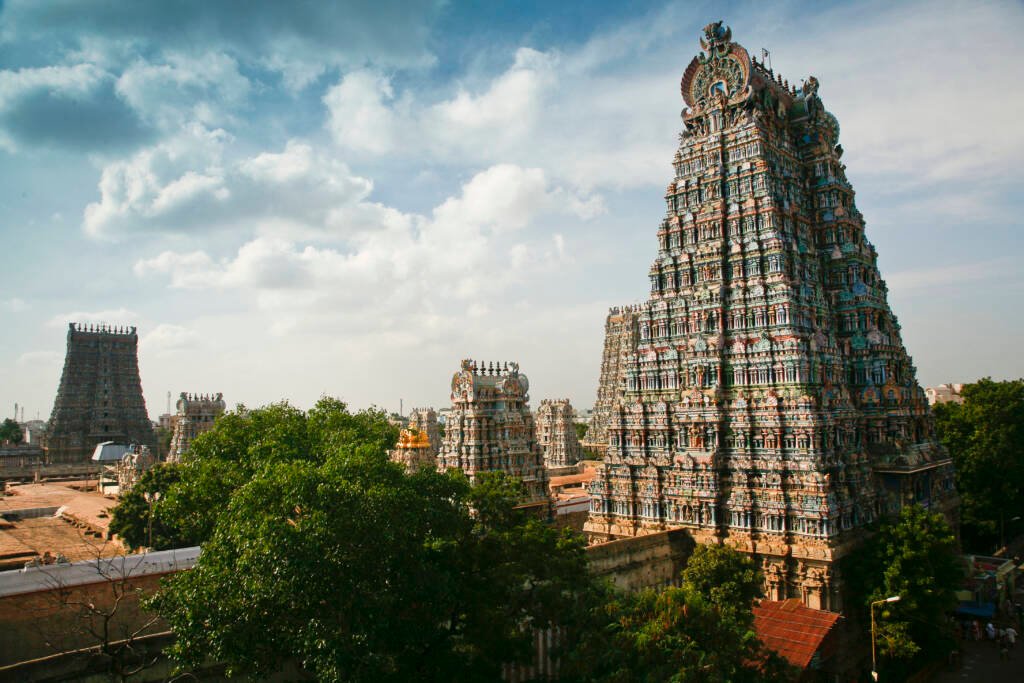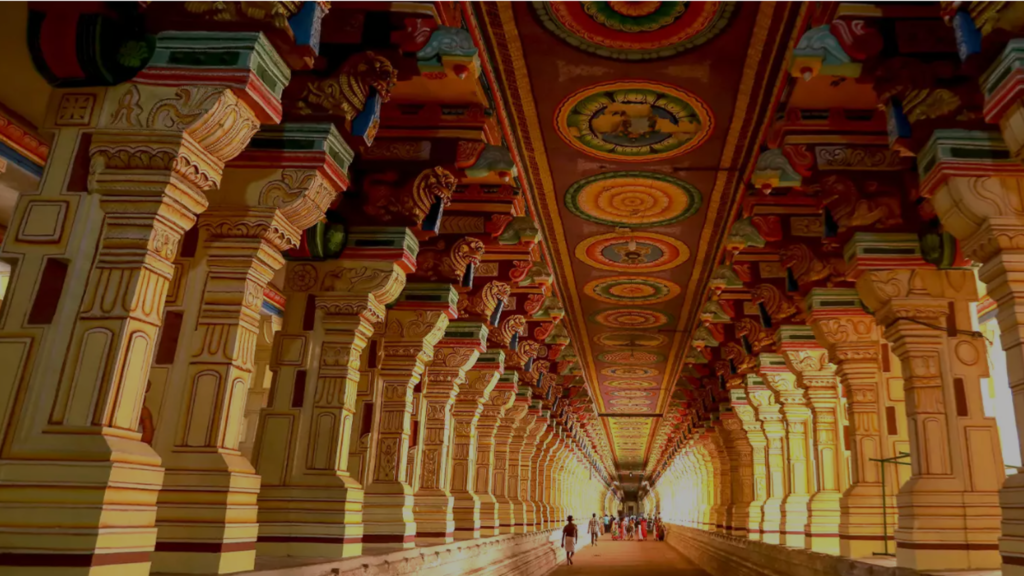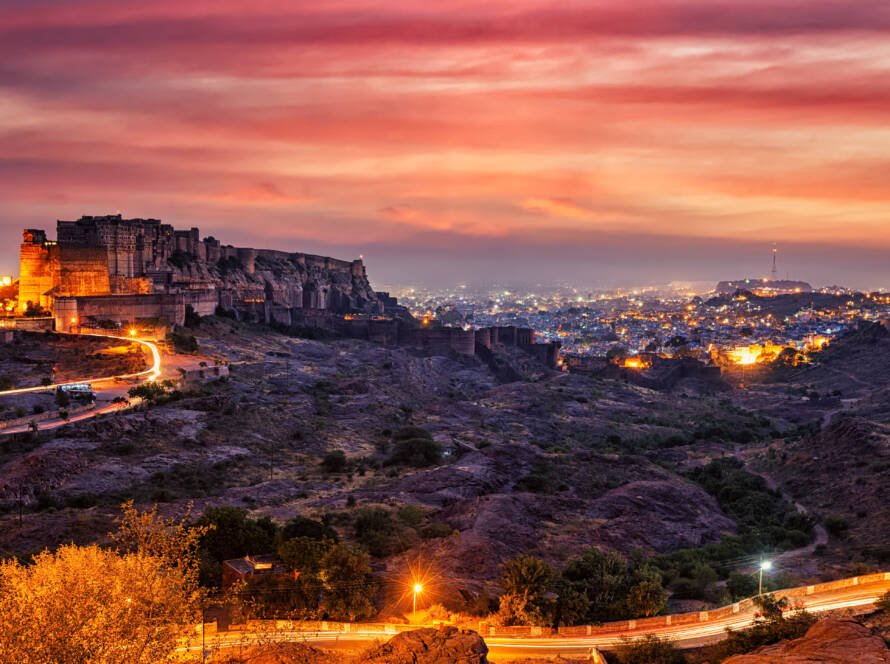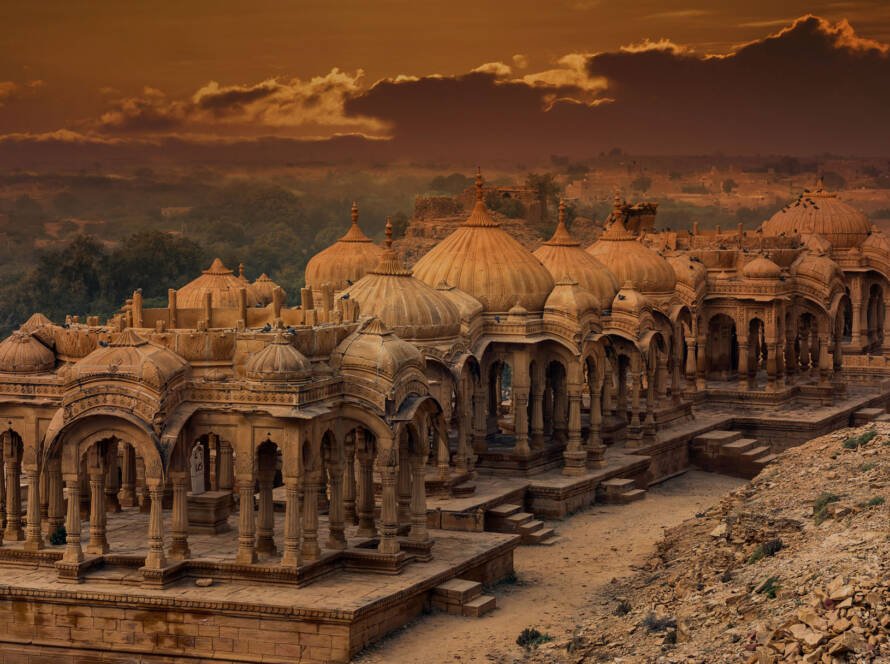Ancient India, with its profound spiritual depth and artistic brilliance, has given the world some of the most awe-inspiring architectural marvels. Among these stands the Meenakshi Amman Temple, located in the historic city of Madurai, Tamil Nadu. This temple is not just a place of worship but a testament to the grandeur of Dravidian architecture, a beacon of cultural heritage, and a vibrant hub of social and religious activity. The temple, dedicated to Goddess Meenakshi, an incarnation of Parvati, and Lord Shiva, draws millions of devotees and tourists alike, captivated by its stunning artistry and spiritual ambience.
The Meenakshi Amman Temple, originally built around the 6th century BCE and later expanded during the Nayak period (16th to 18th centuries), is a true marvel of architectural excellence. The temple complex spans over 15 acres and features a labyrinthine layout of concentric squares, symbolizing the cosmic order in Hindu cosmology. The central sanctum, where the deities reside, is surrounded by a series of smaller shrines, mandapams (halls), and gopurams (gateway towers), creating a sacred geometry that reflects the universe’s structure.


The temple is renowned for its towering gopurams, which are the most striking feature of the Meenakshi Amman Temple. These colossal gateway towers, adorned with thousands of vibrant, intricately carved statues of gods, goddesses, mythological figures, and celestial beings, soar into the sky, visible from miles around. Each gopuram is a masterpiece in its own right, with the tallest, the southern tower, standing at over 170 feet. The colorful depictions on these towers narrate various Hindu myths and legends, inviting worshippers and visitors to immerse themselves in the rich spiritual heritage of the temple.
One of the most celebrated features of the Meenakshi Amman Temple is the “thousand-pillar hall” (Ayiram Kaal Mandapam), a testament to the incredible craftsmanship and artistic vision of the artisans of the Nayak period. Though not literally a thousand, this hall contains 985 intricately carved pillars, each one unique in its design and detail. The pillars are adorned with sculptures of mythical creatures, gods, and goddesses, showcasing the exceptional skill of the artisans who brought stone to life. This hall is also an architectural marvel, with its symmetrical arrangement and elaborate ceiling paintings that add to the temple’s grandeur.
Beyond its architectural splendor, the Meenakshi Amman Temple is a thriving cultural and social hub. It is the heart of Madurai’s spiritual life, hosting numerous festivals and celebrations throughout the year. The most famous of these is the Meenakshi Thirukalyanam, a grand festival that reenacts the divine marriage of Meenakshi and Shiva, attracting millions of devotees from all over the world. The temple’s bustling atmosphere, with its daily rituals, devotional music, and the vibrant participation of devotees, reflects the deep spiritual and cultural significance that it holds in the lives of the people.

The Meenakshi Amman Temple is not just a place of worship; it is a living monument that encapsulates the soul of ancient Indian civilization. Its architectural grandeur, intricate carvings, and vibrant cultural life offer a profound insight into the artistic and spiritual achievements of the Dravidian period. For anyone interested in exploring the rich cultural heritage of India, a visit to the Meenakshi Amman Temple is an experience that transcends time, providing a direct connection to the ancient traditions that continue to inspire and captivate the world.
The Meenakshi Amman Temple is a true architectural gem and a testament to the enduring grandeur of ancient Indian culture. Its towering gopurams, intricate carvings, and the sacred geometry of its layout make it a must-visit destination for those seeking to understand the depth and beauty of India’s spiritual and cultural heritage. The temple’s ongoing significance as a cultural and religious center ensures that its legacy will continue to inspire generations to come.



